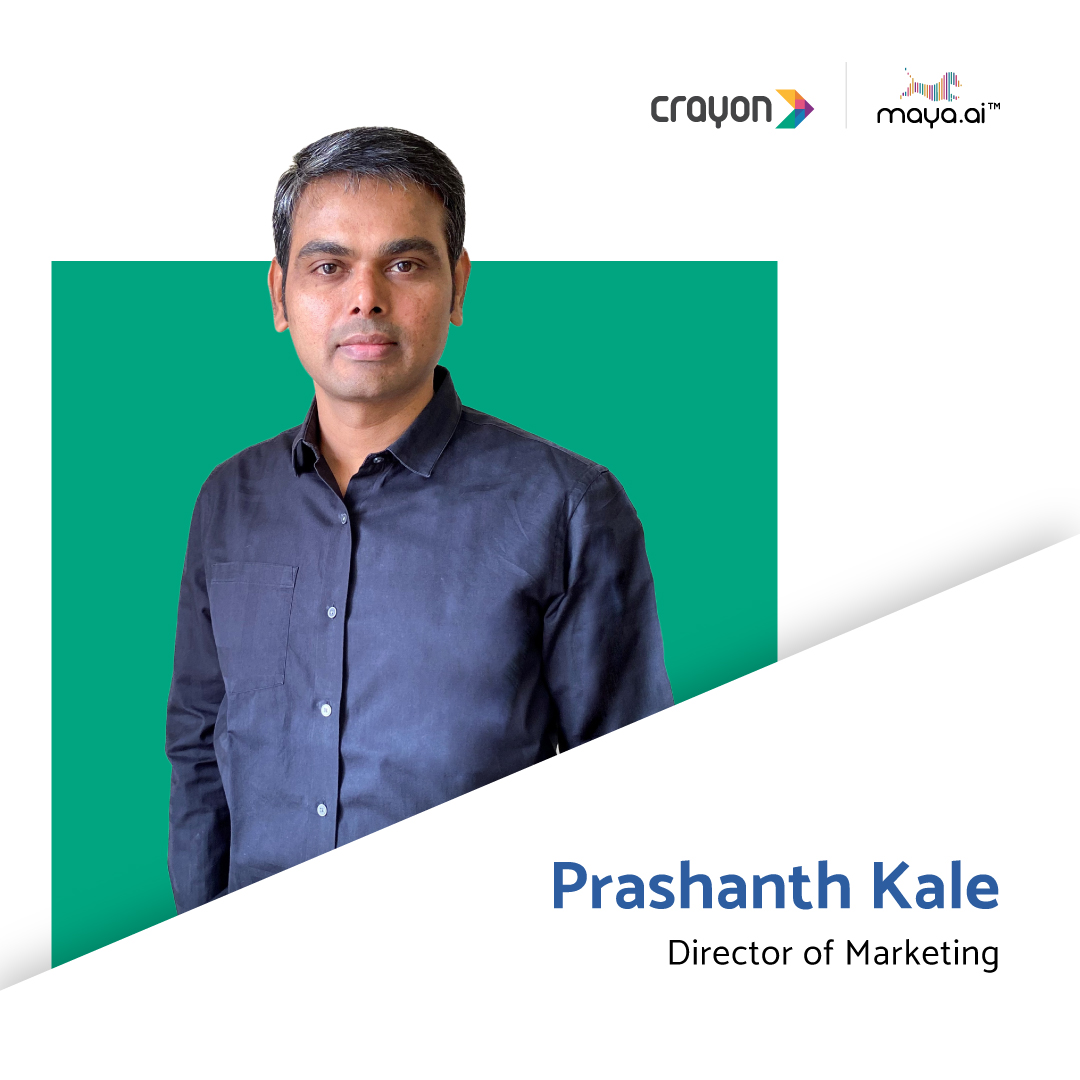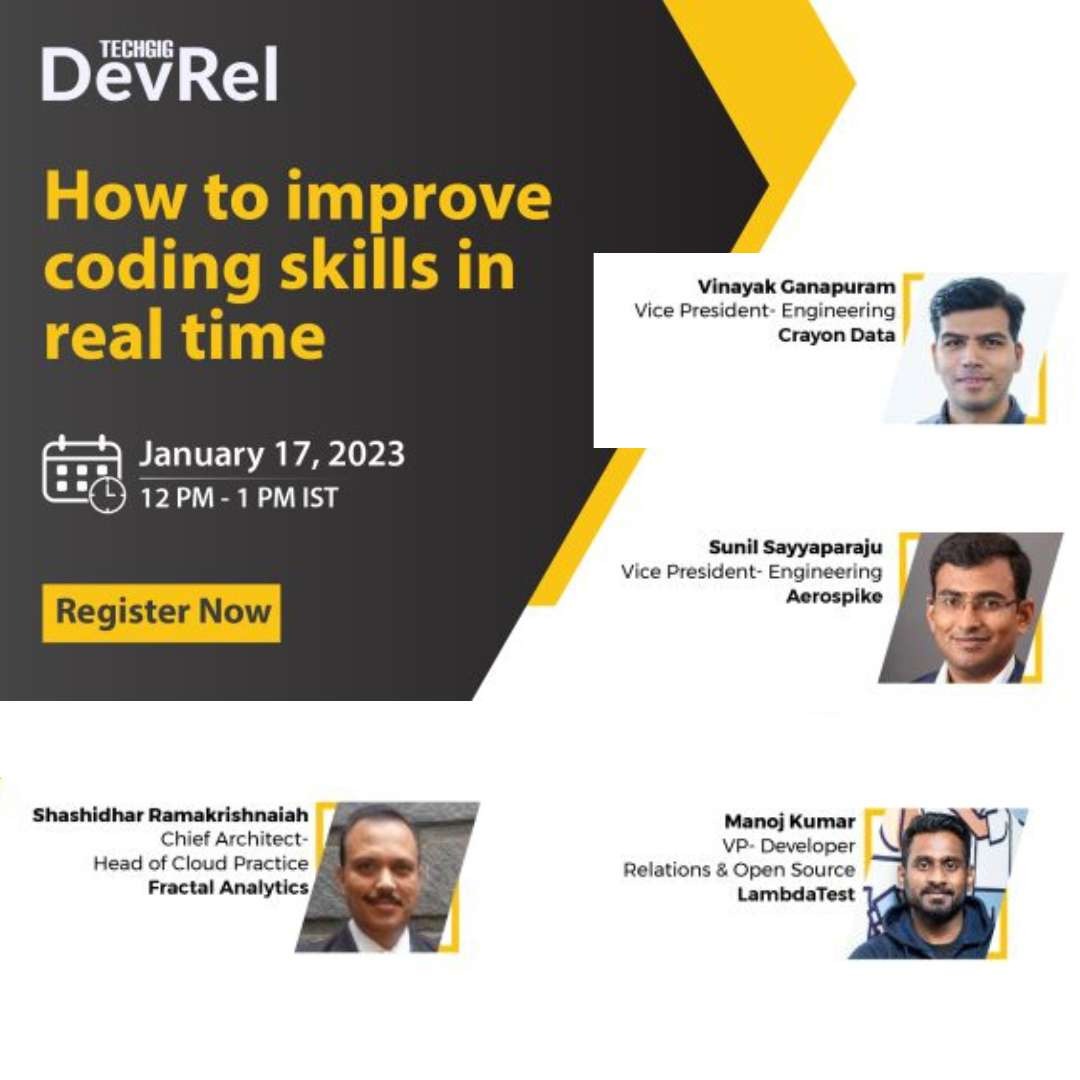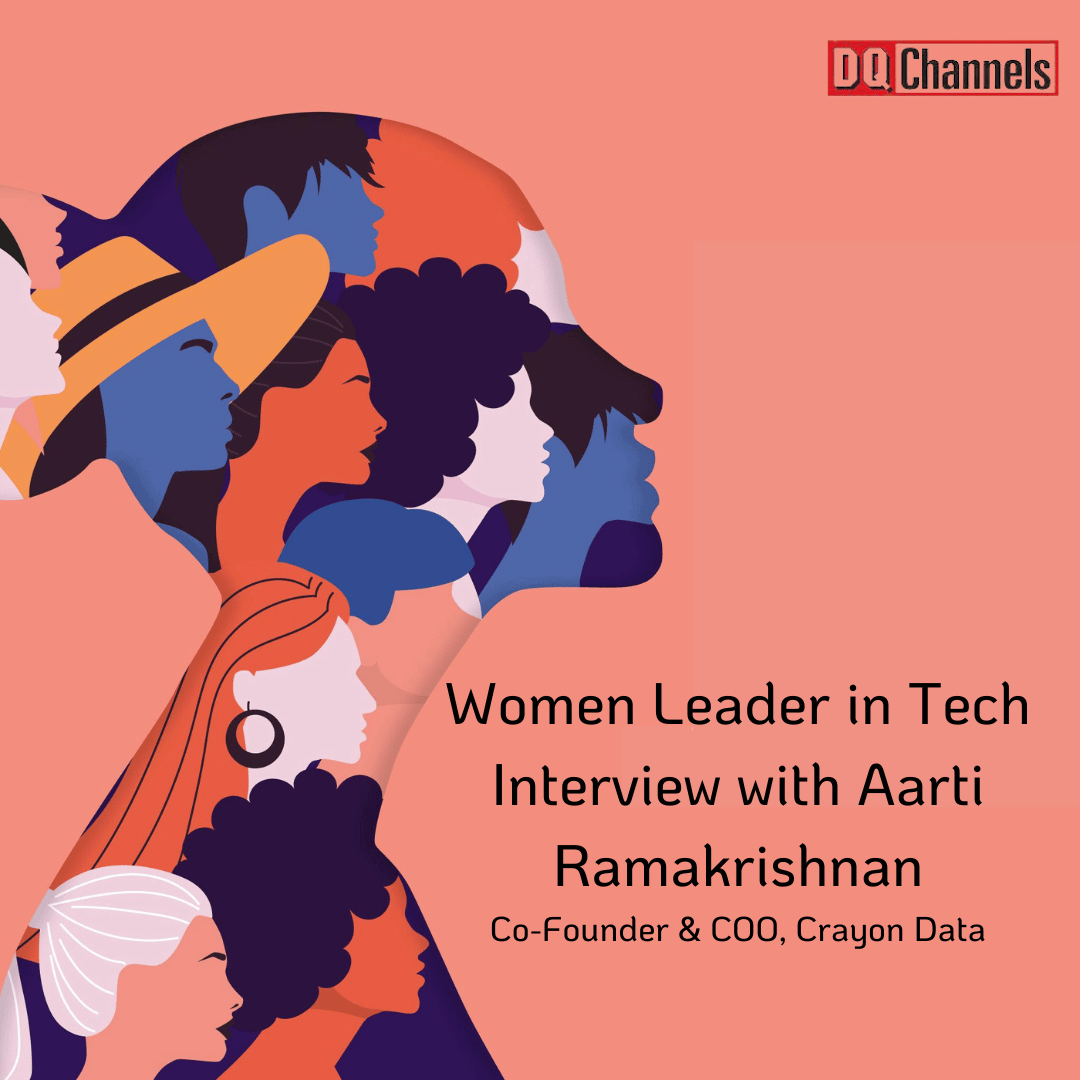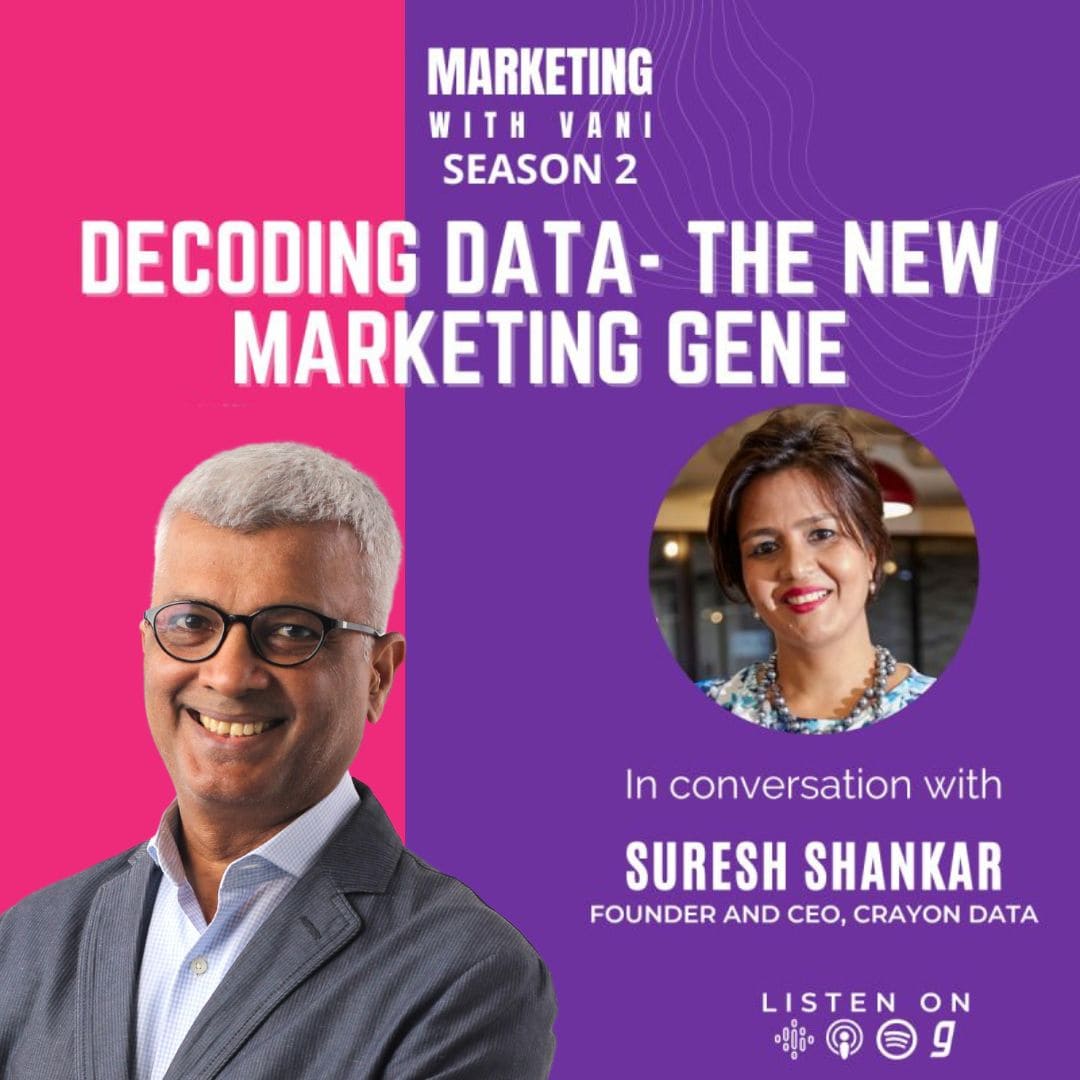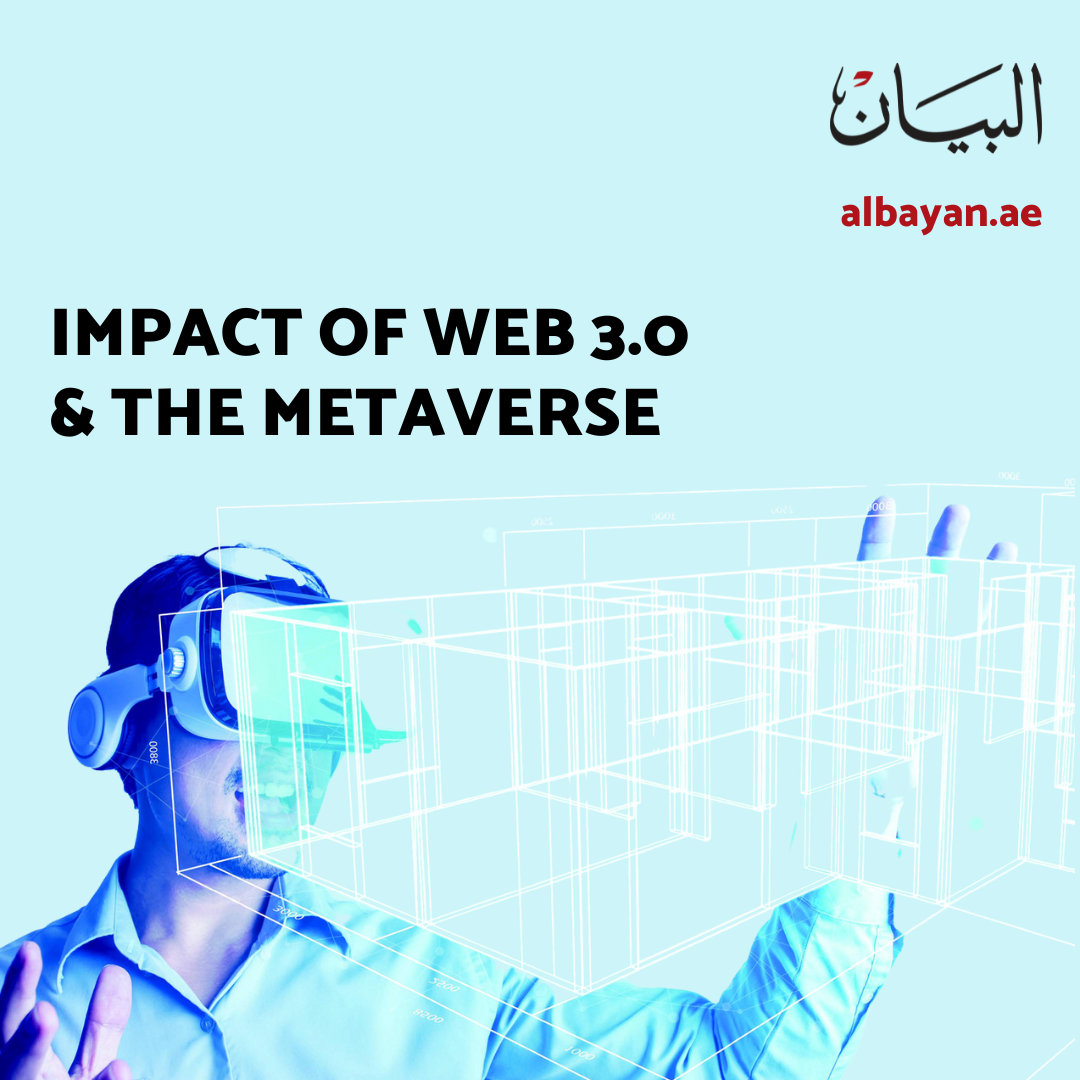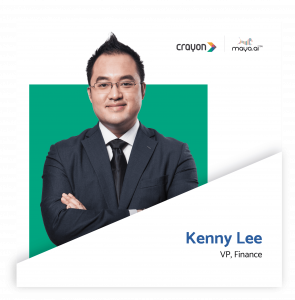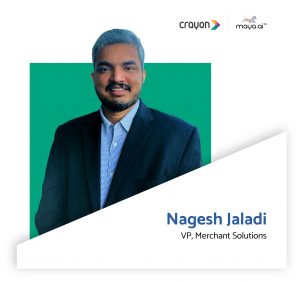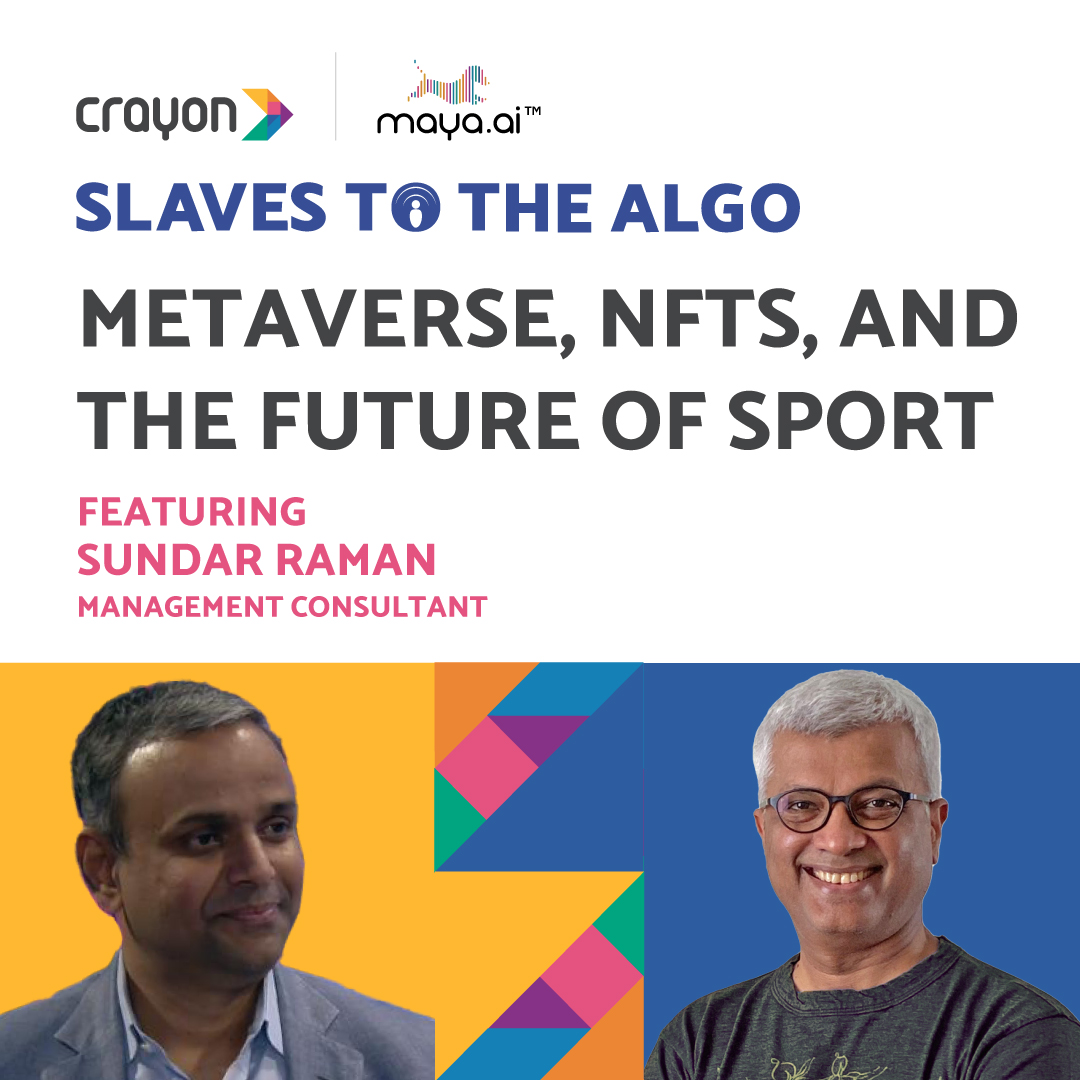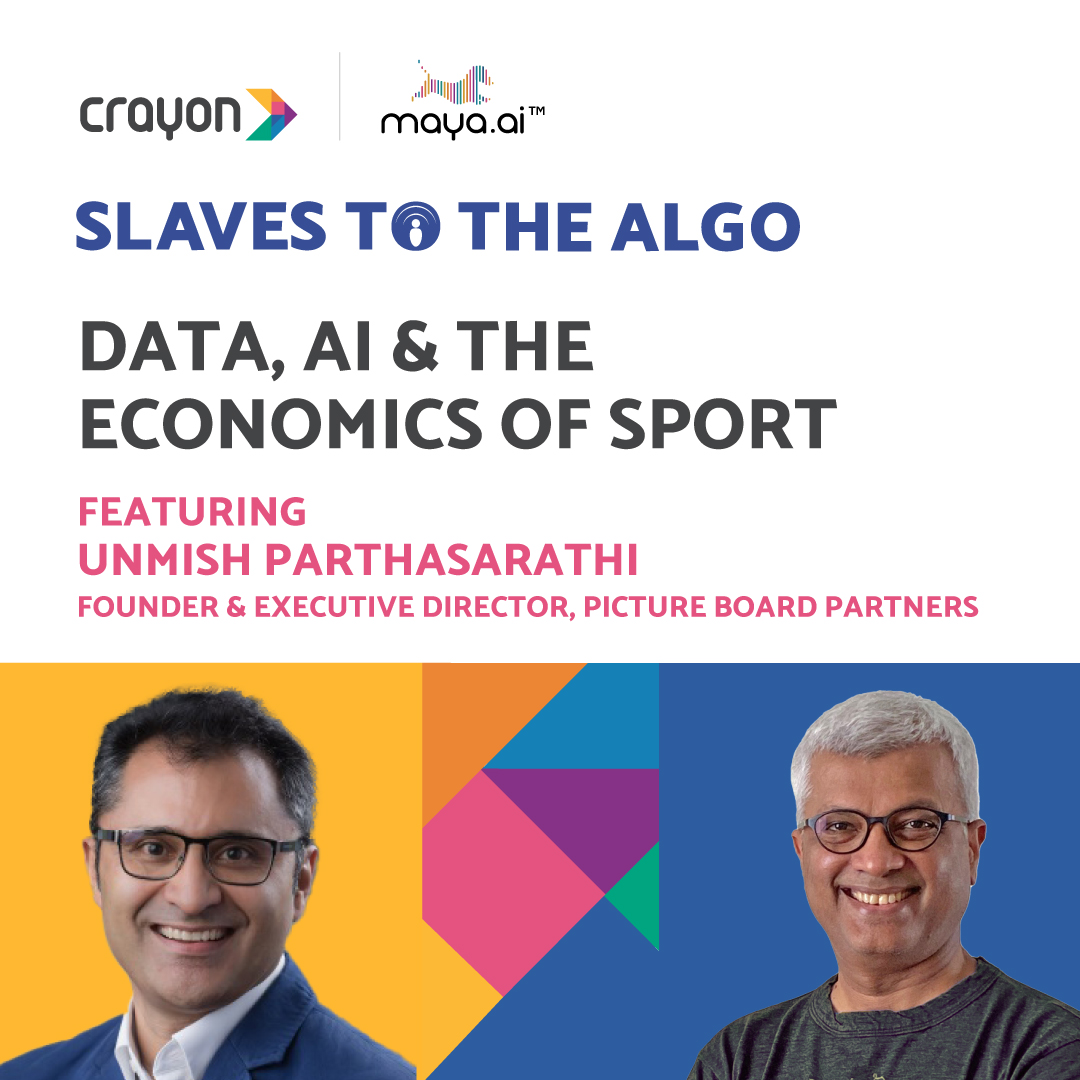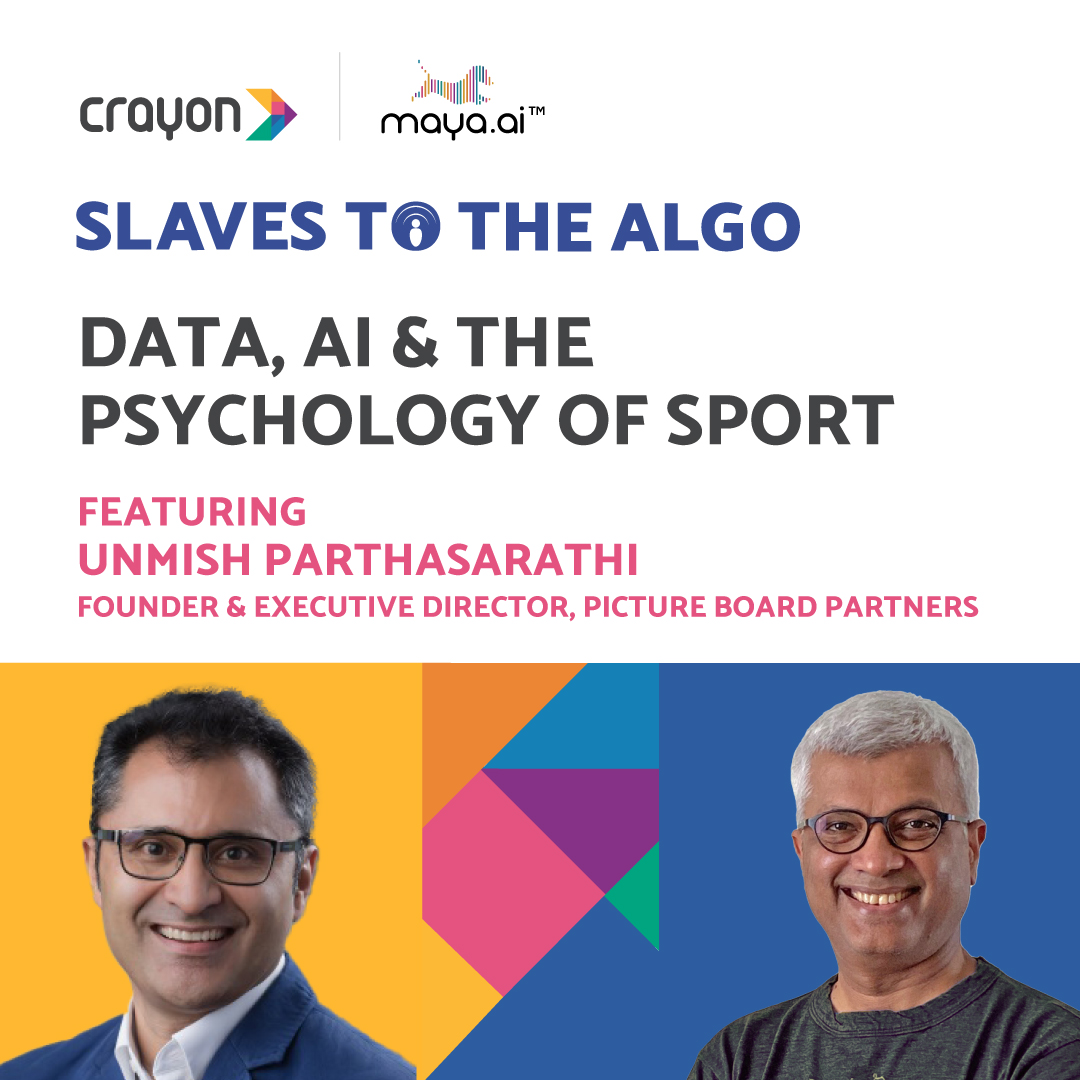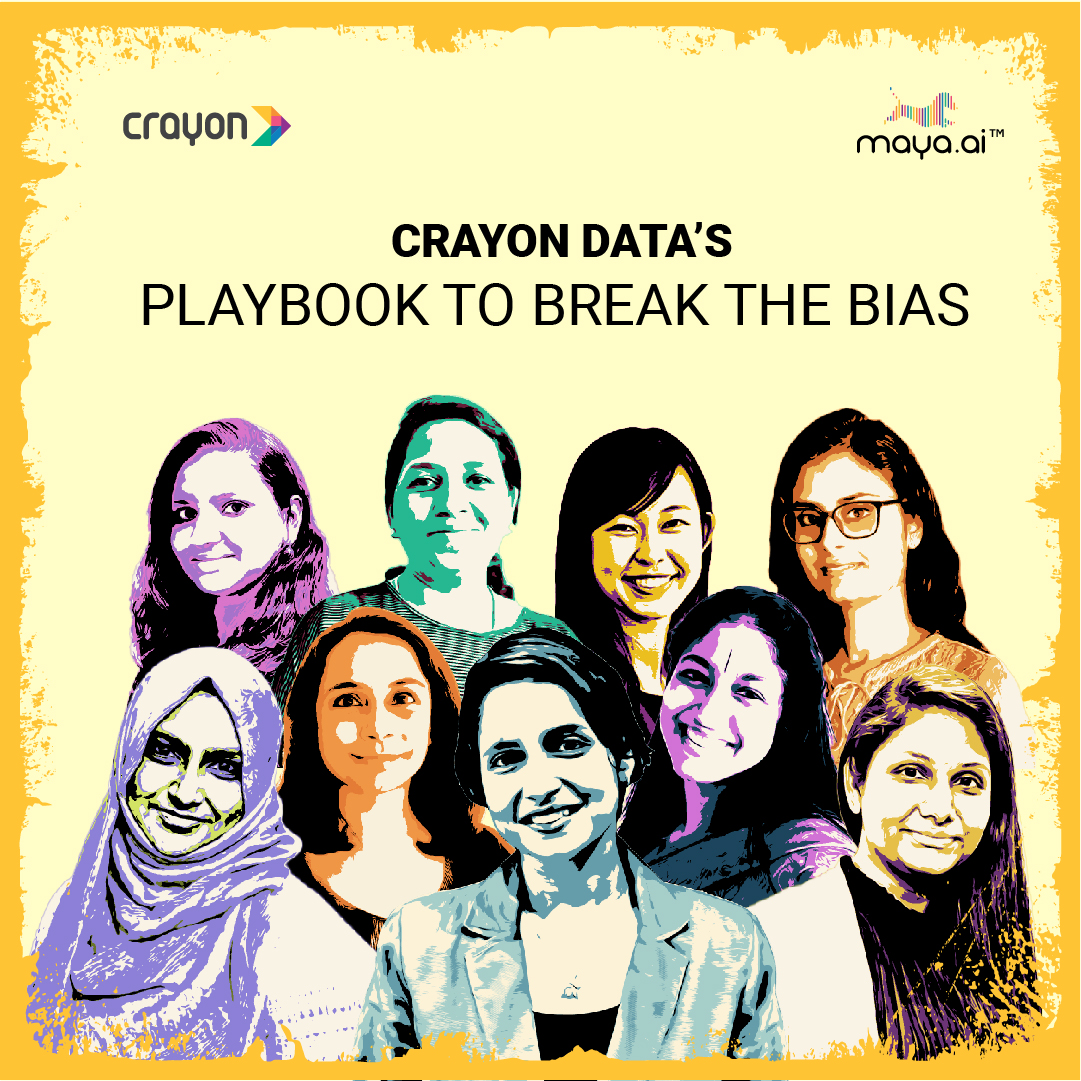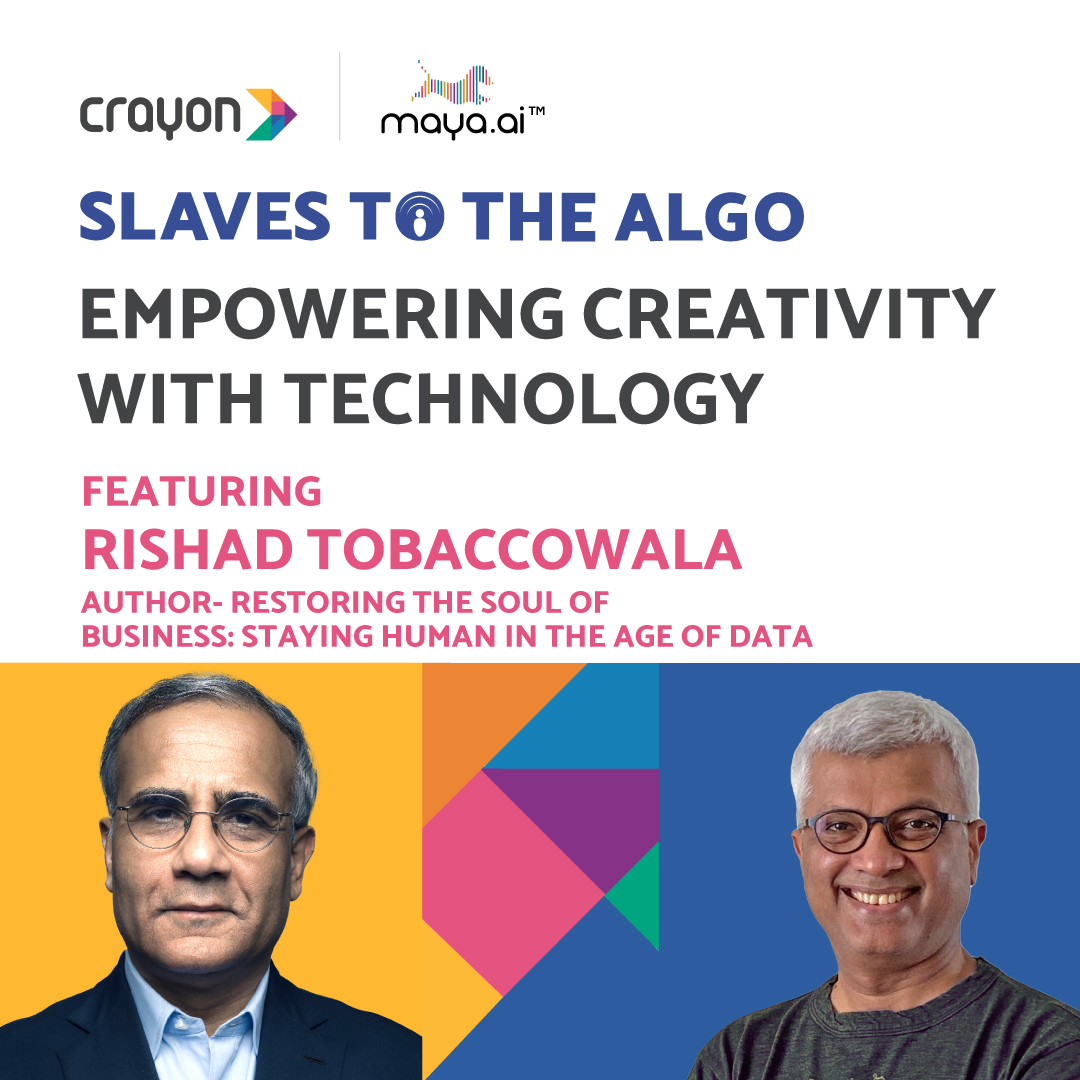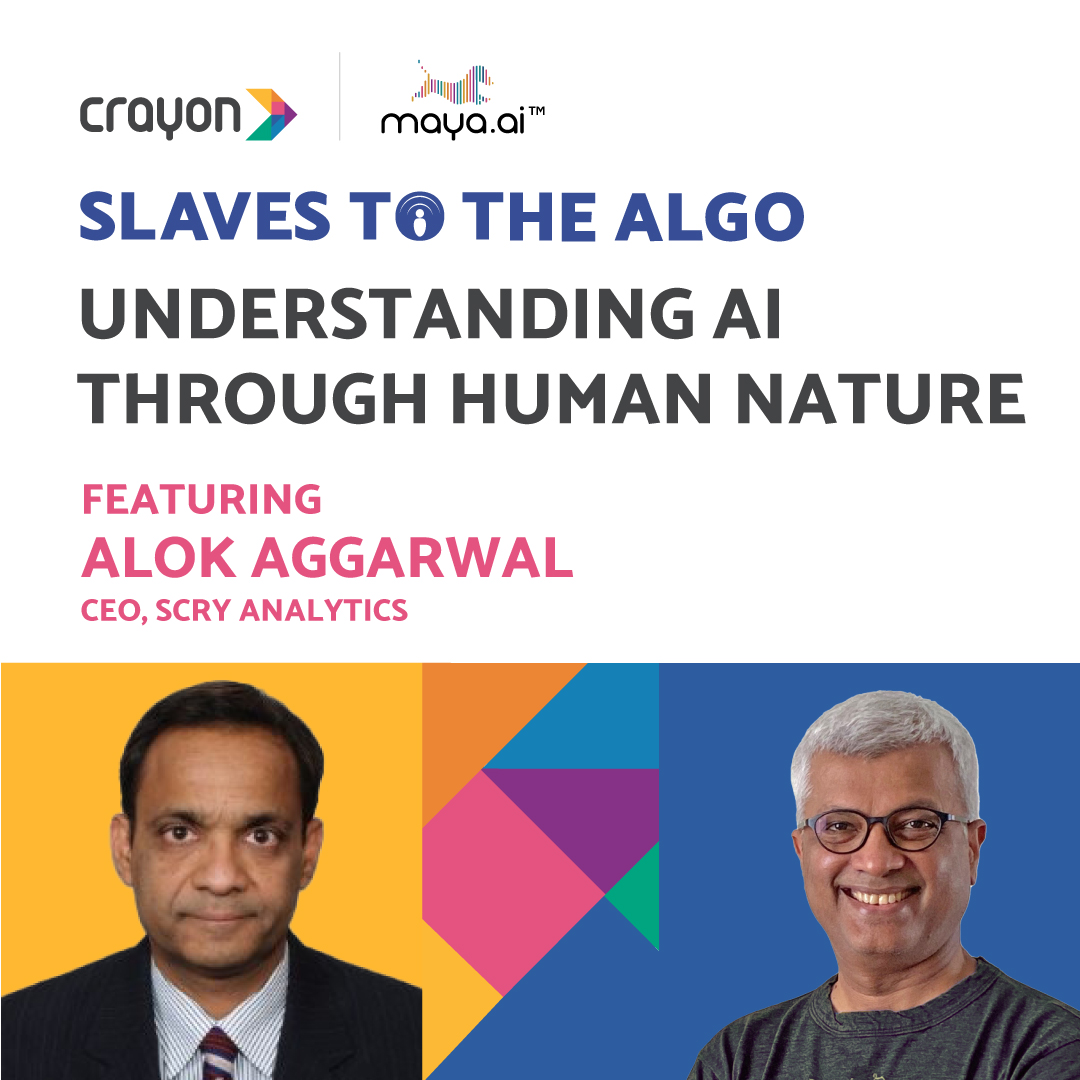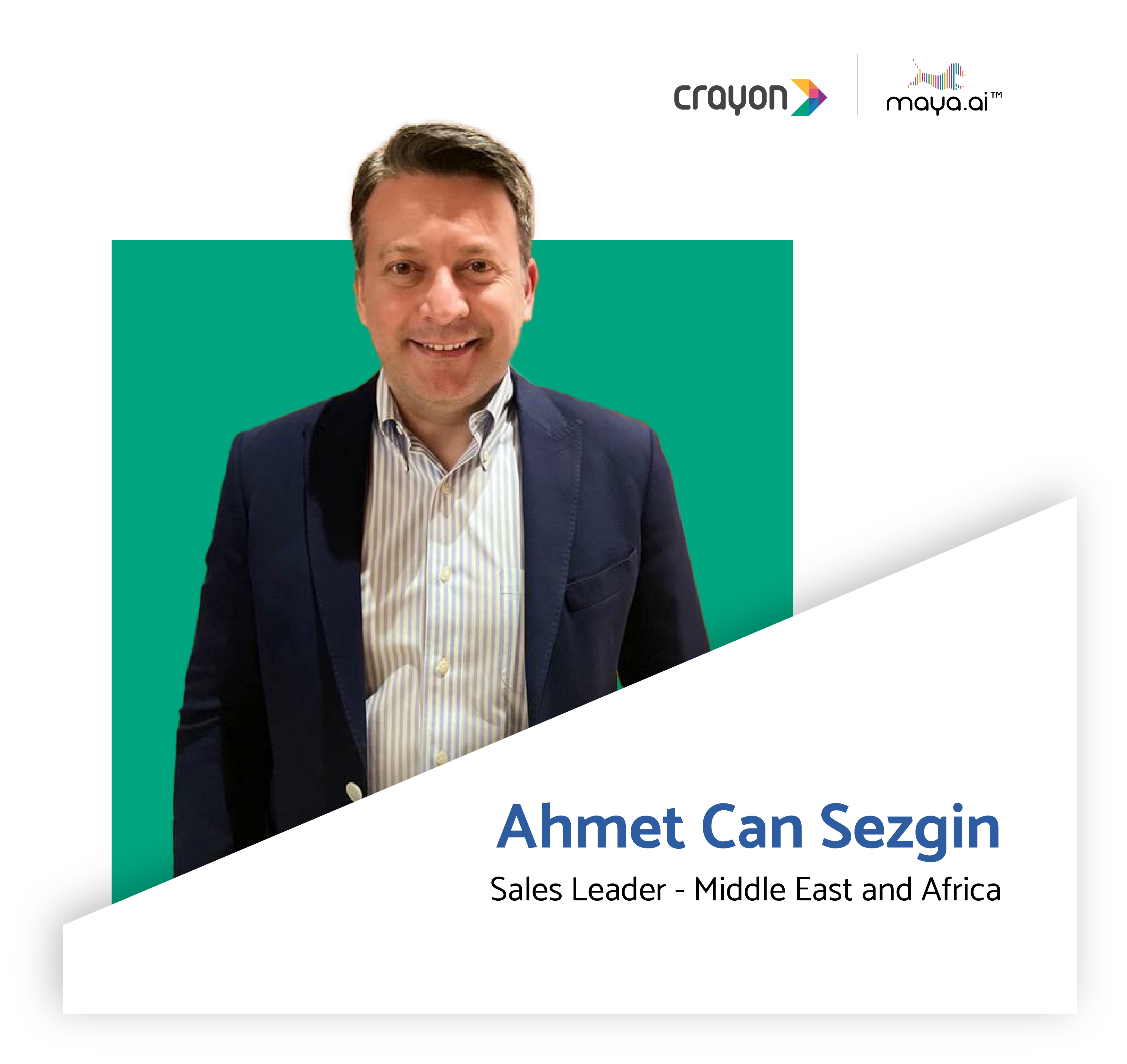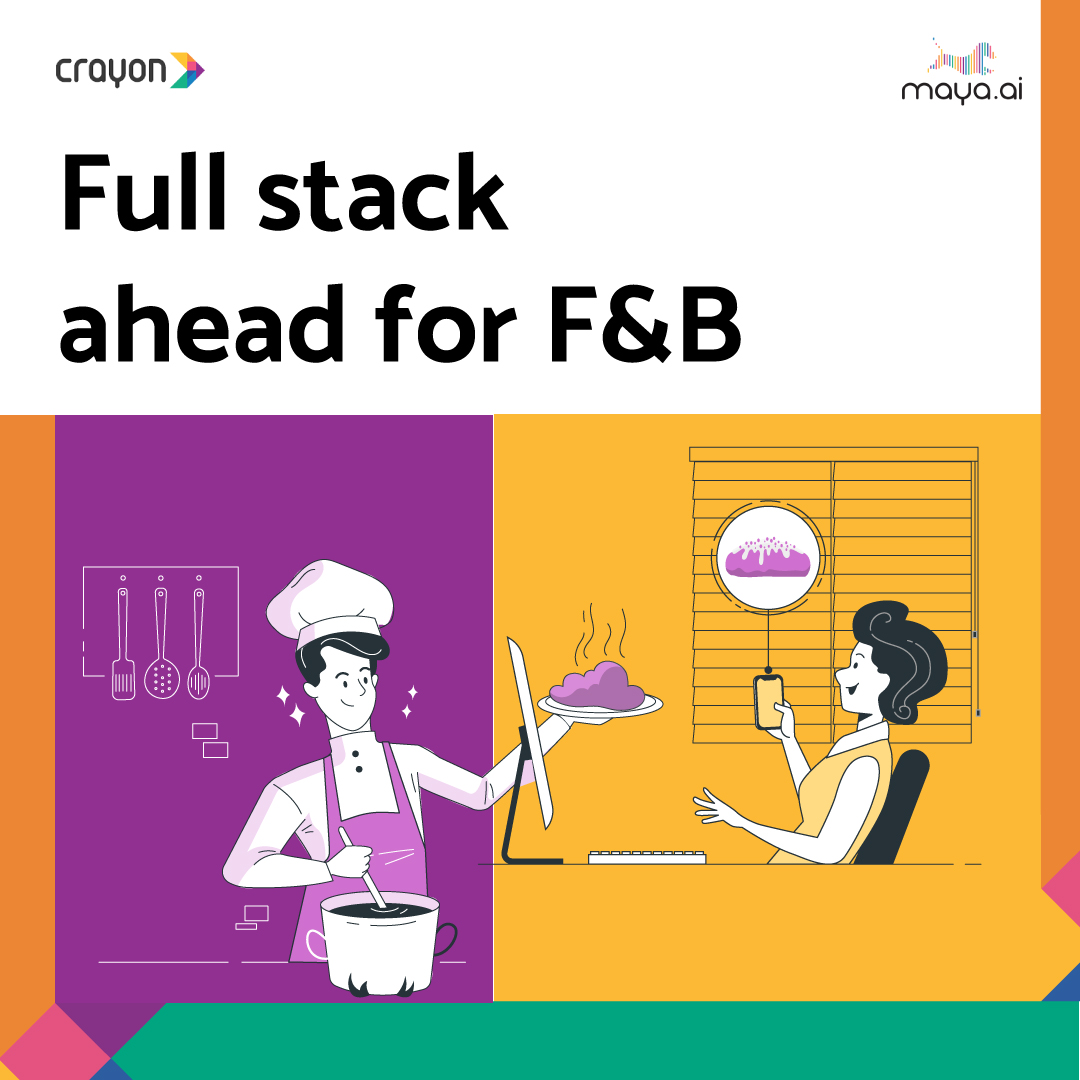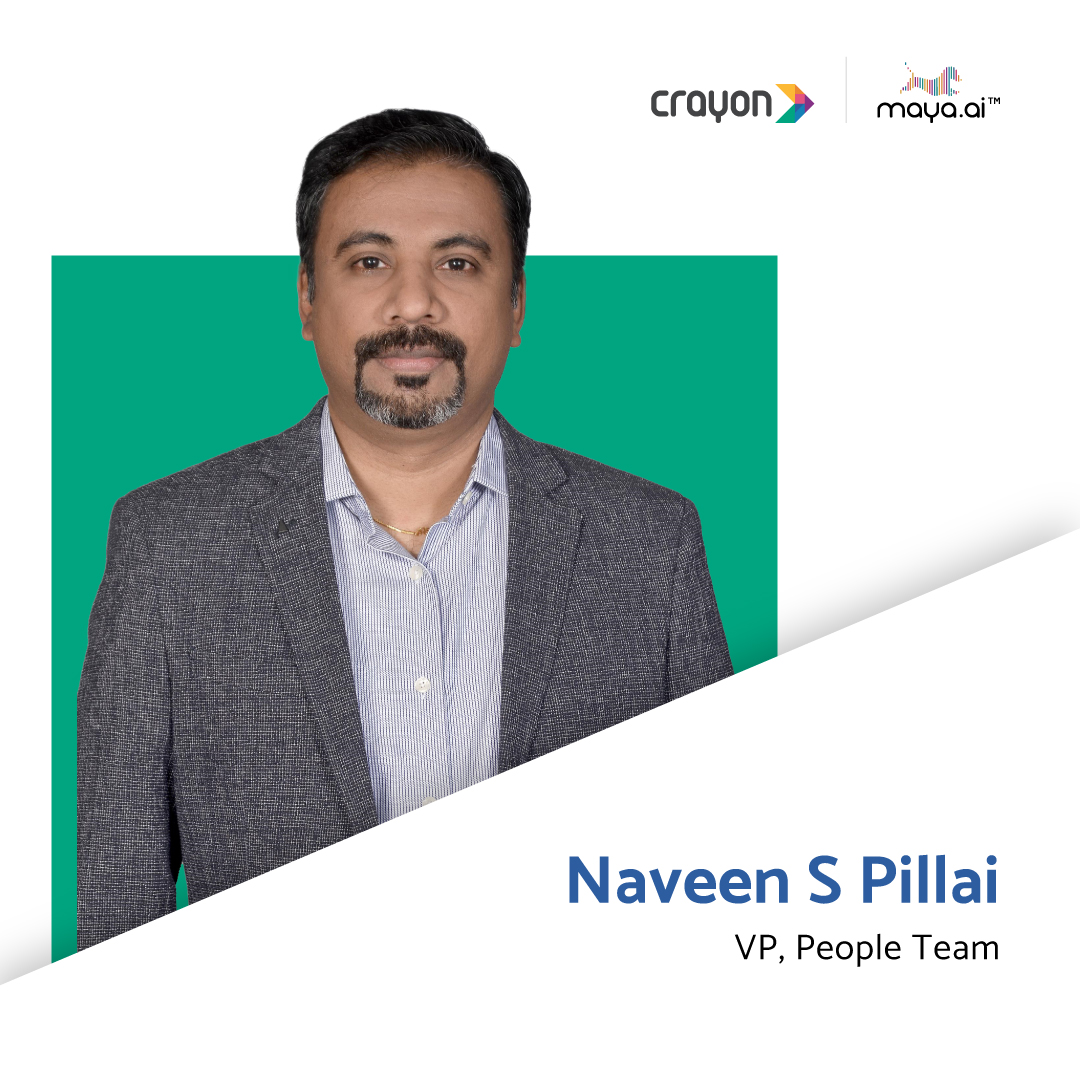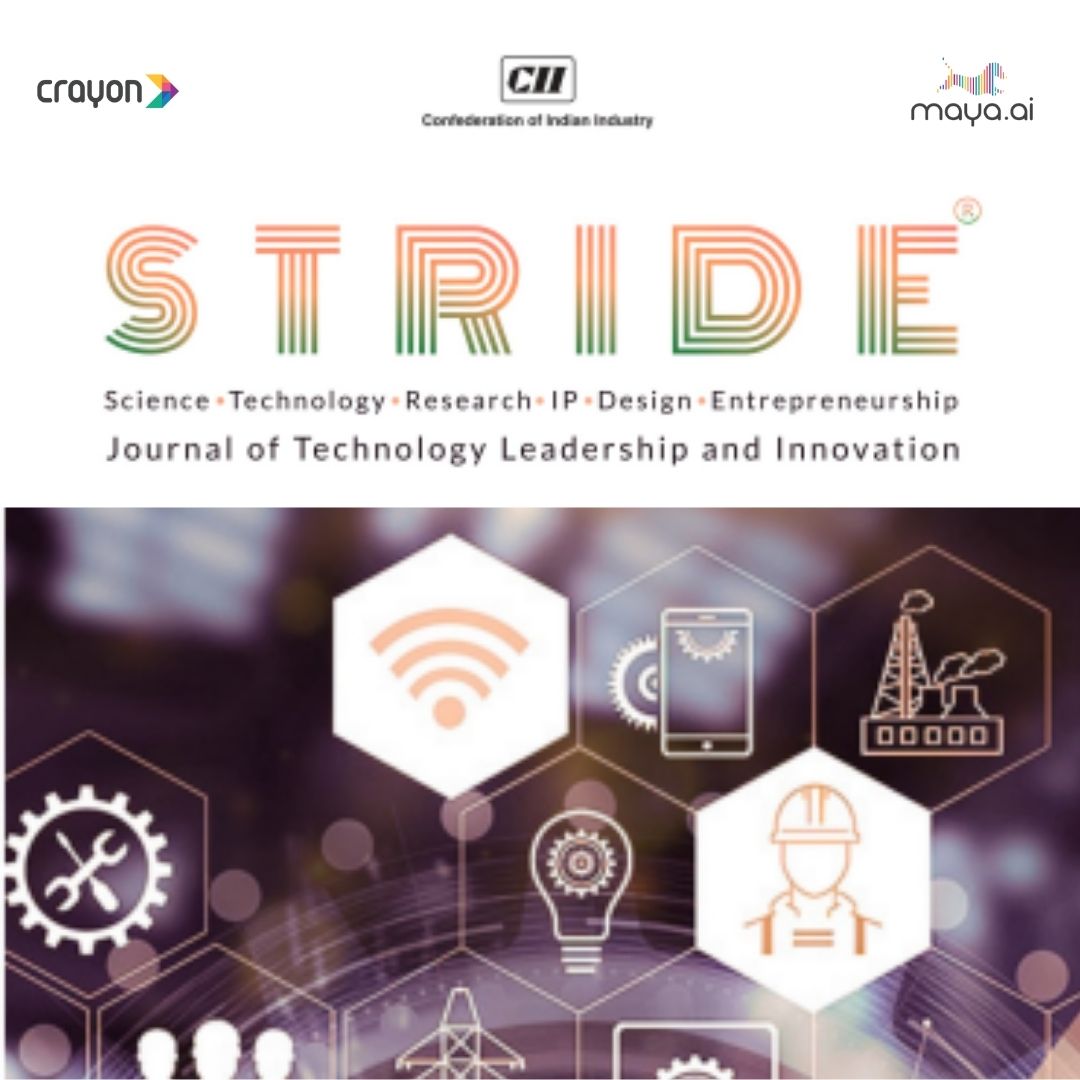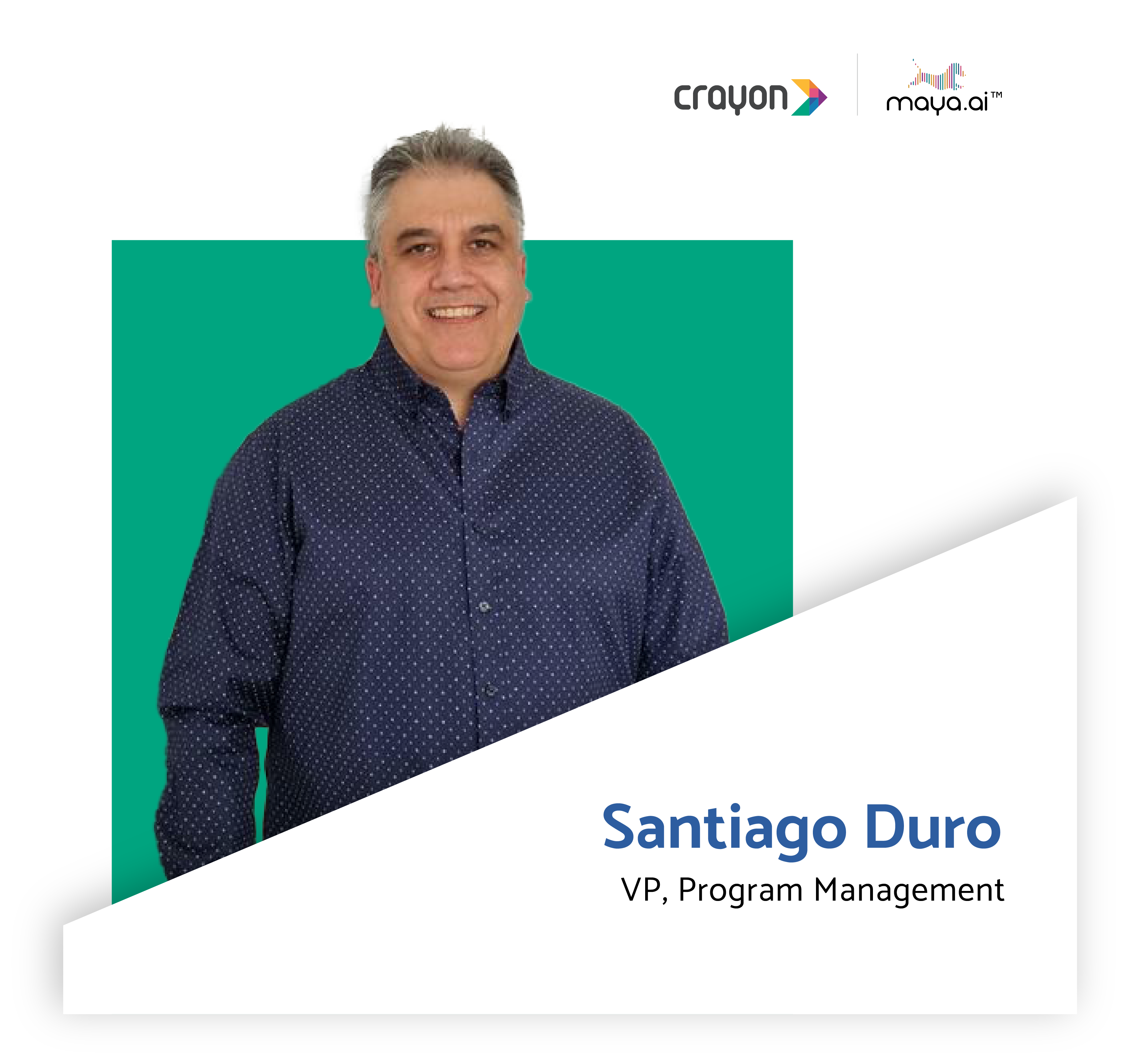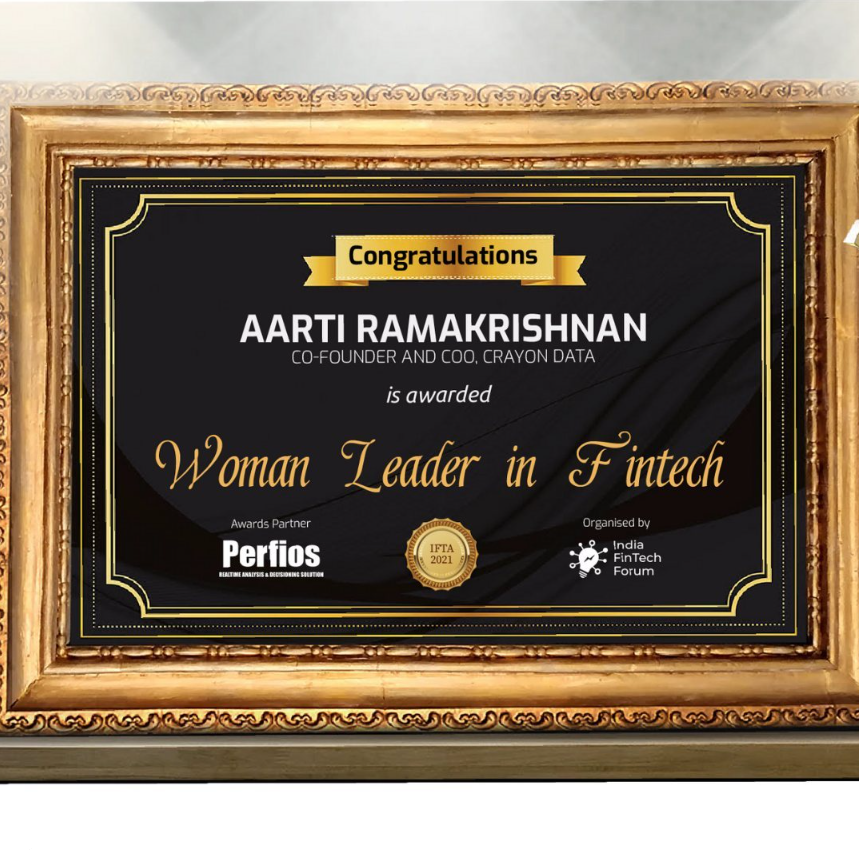Futurist, author, entrepreneur, and educator David Shrier talks us through the evolution of AI, the development of the EdTech industry, and the importance of data-driven innovation across all sectors in this week’s episode of Slaves to the Algo. Drawing on his first job as a builder of data systems for financial services companies, David chronicles the journey of big data, and how it went from being in the background 20 years ago to the forefront of powering organic growth for Fortune 1000 companies today. As a Professor of Practice at Imperial College Business School and the Co-Founder of Esme Learning, David then discussed challenges and opportunities in the EdTech industry, particularly when it comes to delivering a unique, valuable educational experience with high completion rates. David also touched-upon the critical issue of gender diversity and representation, highlighting statistics that show a 40-60 male: female ratio creates the most successful outcomes for businesses. The big takeaways from David’s refreshing insights are that people don’t buy technologies, they buy solutions to problems and that data literacy is the next decade’s skill for survival.
About Slaves to the Algo
Whether we know it or not, like it or not, our lives have been taken over by algorithms. Join two-time entrepreneur and AI evangelist Suresh Shankar, as he talks to leading experts in various fields to understand how they are using or being used by algorithms in their personal and professional lives. Each episode highlights how businesses can leverage the power of data in their strategy to stay relevant in this new age of AI. Slaves to the Algo is brought to you by Crayon Data, a Singapore-based AI and big-data startup.
Suresh Shankar is the founder and CEO of Crayon Data, a leading AI and big data start-up based in Singapore. Crayon Data’s flagship platform, maya.ai, is the AI platform powering the age of relevance.
How to listen to our podcast
Apple Podcasts
Spotify
Google Podcasts
YouTube
Full transcript of S2EP3 below:
Suresh:
Hello viewers and listeners, I’m Suresh Shanker, founder, and CEO of Crayon Data an AI and big data startup. And I’m delighted to welcome you to season two of my podcasts: Slaves to the Algo. That’s right. Slaves to the Algo. Slaves to the Algo is my attempt to demystify the age of the algorithm. I plan to share my own learnings and those of leading professionals in their fields to understand how they are using or being used by algorithms in their personal and professional lives. And today, I am delighted to have David Shrier. Futurist, author, entrepreneur, an expert on AI, a polymath.
David is a professor of practice of AI and innovation at Imperial College Business School in London. He’s the managing director and co-founder of Esme Learning Solutions, a company that has spun out of his work at the MIT Media Lab. David has taught at Saiid Business School at the University of Oxford, at MIT, he’s co-founded several companies, he’s been an adviser to governments and NGOs, he’s currently an advisor on AI to the European Parliament. I could spend the whole podcast talking about him. But very simply, welcome to the show, David.
David:
Thank you, Suresh. It’s great to be here. And great to see you again.
Suresh:
Yeah, David, when we first met, I think I was in London, you were in Boston, then we met in Singapore. You were shuttling between London and Boston. Those days of travel seem a distant memory. But you’re now firmly settled in London, am I right?
David:
Absolutely. At least in Kensington. I’m about a 15-minute walk to the Imperial campus, not that anyone’s going to campus these days. But someday, I have hope we will all get inoculated. And then I’ll be able to walk the campus.
Suresh:
And we will get to that in a moment. David, I think whenever we’ve talked, I’ve always thought of you as a person in three or four different avatars: educator, researcher, author, futurist, and entrepreneur. And I hope to cover many of those David’s today. I think a special lens we’d like you to bring to the listeners of this show is your views on how data and AI have been an integral part of your professional journey long before these were normal words, and how they kind of literally influence every one of those avatars of yours.
So let me get straight to the first thing that I wanted to ask you. You are often referred to as a futurist. And I want you to go back to your past, and in your career, tell me, how is the use of data and algorithms changed? You’re working in your working life? And did you predict any of those changes?
David:
Well, you know, to me, by the way, none of these things are dissonant with each other, right? I get attracted to big ideas. My whole career has been around this big idea of how technology can solve big problems in the world. And, so, these different expressions of it, whether it’s building a business, or teaching a class, or writing a book, that’s all just derived from the same body of thought of how do we solve big problems with technology, and in particular, the technology I spend the most time on is the intersection of AI and data analytics.
So you know, that was something that I was into from a very early age back before it was cool. Right, so my first job out of college after I had a brief dalliance in theater, that’s another story was working on Wall Street, building data systems to get, you know, computers to talk to each other. And so, we were working with, you know, what, these days would be considered fairly primitive algorithms and data systems. But, you know, that was back when, when FinTech wasn’t even called FinTech, right? We were, we were like the trolls in the basement, we were literally on a lower floor, and off to one side, at a different elevator bank. But I was in it from the beginning. And, you know, it was very satisfying to figure out ways to sort of bring these things together so that, you know, a portfolio manager would have the information they needed at their fingertips so that they could counsel a client on you know, kind of what decisions to make about their assets and their investments.
And, you know, that then carried through and, and I kind of watched over a 20-year period as it went from being this, this kind of ugly, dirty thing in the background to being you know, the foreground and the forefront of what people are excited about. So, in every single instance, that I was using technology to solve a big problem, often to drive transformational growth for a Fortune 1000 company, I was using data analytics, right. So, at Dun and Bradstreet, I came up working with Vicki Raber, who was the Chief Data Officer at the time. The only organic growth that the business experienced for almost 20 years. And we added like $100 million of enterprise value to D&B, leveraging advanced analytics on top of core reference data. And this was back in like 2000 to 2003 when the idea of analytics was viewed as still the very sort of wonky, niche thing that you know, only specialists really cared about.
Then more recently, at MIT, I worked with 200 billionaire families to basically identify a rising trend around ESG, analytics, environmental, social, and governance analytics, which is a core concept at the heart of sustainable investing. And, this generated an entire new research initiative at MIT Sloan around a more sophisticated model of assessing impact investing using data. And now with my EdTech startup, Esme Learning, we’re using learner data about how teams collaborate to solve problems and playing back those AI-derived analytics and positive feedback loops to the learners to help people transform their careers. And so, people who went through our approach to entrepreneurship, for example, were 50% more likely to start a company than people who went through conventional accelerators. So, it’s been very exciting to watch analytics become more recognized and important and to see how it can transform lives. Data is life.
Suresh:
I love that. Data is life. And you know, I’m sure you know Rick Smolan, right? The guy who wrote The Human Face of big data. And you know, Rick talks about this whole thing that data is literally permeating every aspect of life. And David, I couldn’t have had a more different life than you. I didn’t like math and stats, never went to the classroom properly when I was doing that. And God’s way of taking revenge is now making me do that for a living! All those classes in detail. But I will come back and sort of make this a little bit personal.
David:
Yeah.
Suresh:
What are some of the favorite algorithms that you experienced as a consumer, as a business professional, and you say, wow, that’s changed something. And you probably recognize the algorithm, many people don’t even know there is an algorithm at the back of this right? And especially in recent years, some ways in which, you know, these things are taking over our lives.
David:
Yeah, I mean, so one thing that has been transformational for me, has been the gradual progression of the speech to data algorithms that underlie speech recognition. So, I was playing around with them in the 90s. And they were pretty bad. They weren’t terribly useful. And I’ve watched them get better and better and better. And probably about five or six years ago, they hit this inflection point where they got dramatically better. So now, I will often write and not only articles but books, about a third of my blockchain book, for example, was dictated into my phone and then cleaned up afterward. And so it may have given my editor a few headaches, but I wrote much more fluently, and much more rapidly with this ability to kind of talk to my phone. And that’s starting to permeate every aspect of life, right. So now people are putting these little home devices into their, their, their flats, or their houses, whatever that that they talk to. So, you know, this conversational AI is a hot area. And that’s something which, which has been really exciting to see. And I use it all the time.
Suresh:
For a moment can we go a little bit deeper into something you said? As you know, it’s been around 20 years people have been trying, and somewhere that was an inflection point. Was that better technology? Was that just the training of more and more voices and more and more data going into that? What caused that inflection point?
David:
Yeah, so there was a new kind of technology that came around in approximately 2016. So, AI went through a phase change. Until then, we had, we had AI, we had machine learning, but machine learning systems would hit a plateau. So, they get better, the more data you pumped into them up until a certain point, and then they just flattened out, and just no matter how much more data you dumped into them, they didn’t get any better. Around 2016 or so we saw the emergence of substantive deep learning systems. And with deep learning, the more data you put in, the better it gets ad infinitum. And so those systems have really been, you know, massively transformational for every aspect of kind of advanced AI.
Suresh:
And, and that’s what I think is really interesting because when this kind of technology and that’s not the purpose of the show, but it’s very interesting. You mentioned that that kind of technology is used to actually help you write a book, you can just get your thoughts on the go. It’s fantastically transformational. But when you have stuff that’s being listened to, and you don’t know where it’s being sent to, it could be also, you know, it’s either utopia or dystopia in many ways.
David:
Absolutely, yeah. Data privacy.
Suresh:
Which leads us to where is this headed? Utopia? Dystopia? Both?
David:
Both. So we’ve spent a lot of time on this data privacy question. So something transformational happened for me personally, in 2013. In 2013, when I started working at MIT, I met a professor there named Sandy Pentland, Alex Pentland. And he is called by some the godfather of wearables, the most powerful data scientist on the planet, there are a lot of labels for him. But this is a guy who has spent a lot of his career on these questions of big data and how it works with society. Within the last decade or so he spent an awful lot of time on the question of data privacy. So, Sandy’s work with the World Economic Forum linearly led to the GDPR, the general data protection regulation.
So, we put a book out actually, in 2019, called “Trusted Data” about these questions of data privacy, data governance, and how can we protect data better, while also making it more useful and more available? And so, privacy-preserving data analytics and data sharing is a hot topic, some people call it homomorphic encryption is one approach to privacy-preserving data sharing, but there’s a lot to it, and probably a whole podcast by itself.
Suresh:
Absolutely. And I’ll probably take you up on that and do a separate one, but I’m just going to dwell one moment on the technology.
David:
Yeah, please.
Suresh:
There is this new idea that AI can be done on the edge versus being done on the cloud. Apple’s trying to promote this idea that I’m not taking your data back to the cloud, I’m going to do a lot of this, including, you know, when you go closer to your office, you know, it kind of shows you the things out there. Google and others are taking everything back. Alex takes it back to the cloud. What’s your take on this particular topic and where you think the world will go?
David:
I wholeheartedly approve, because it’s more secure for your personal data. Right, instead of creating a giant honeypot that hackers can steal, the data is all fragmented and encrypted at the edge. I think it’s a much sounder protocol, it’s better for you, your personal data is protected. And with advanced computation systems, it’s still possible to do useful things for you with that data, without, you know, sort of breaking that security protocol.
Suresh:
So, David, I think this is probably a podcast that I would want to get into, I’m going to come back and do a second episode with you. But I’m going to go back into something that I think you’ve done a lot of work on, which is how data and AI are transforming work. And you wrote this, and I quote, “artificial intelligence is driving workforce disruption on a scale not seen since the Industrial Revolution. Automation was once associated with mass layoffs in heavy industries like auto and steel. But computers are getting smarter and beginning to place traditionally white-collar roles like law, consulting, banking, and finance.” To the audience, that means us. People like us. And you know, what they are saying is most, or at least many of us will not have jobs soon. So, David, the question is, what are the two or three big things that you see happening to work in the next few years as a result of AI?
David:
Yeah, I mean, and, and I can’t take credit for a lot of this thinking that compares the AI revolution to the Industrial Revolution. You know, Erik Brynjolfsson, who’s now at Stanford, notably, among many has been calling this out. But I’m certainly happy to explore the trend and the theme. And, you know, so I went through a journey as I put a book together that’s coming out this spring called: “Augmenting your Career, How to Win at Work in the Age of AI.” And it was inspired by this question, because so many people were coming to me and saying, I’m worried that I’m going to lose my job due to AI. And my initial reaction was, no, you’re not going to lose your job. And I started digging into it. I said, well, actually, you might lose your job. And then I went a step further, particularly with the work with Sandy Pentland, and said, you know, what if there were ways that people and computers could come together, and do things that neither one could do by themselves?
So for example, if you have a large, complex organization, what if there were a way to harness the collective intelligence of all the human brains in that organization, using AI to come up with answers or predictions that you couldn’t otherwise come up with? So, so we came up we ran something known as a prediction market, for example. So, we had 1000 students all over the world taking our FinTech class, And we put them in a prediction market and had them guess the closing price of the stock market. And then we use AI systems to selectively reveal for predictions. So, it became more social. So basically, people were seeing each other’s predictions but in a very carefully calibrated fashion. And, and we were able to tune that prediction market to get with I think it was within point 1% of the actual closing price of the S&P 500 with a prediction a month ahead of time, during a volatile period. And so, so that’s an example that real money…
Suresh:
I’m signing up. I’m signing up.
David:
So yeah, you know, but the real money is on the line there when you can get these things right. Or imagine if a heavy manufacturing company could figure out you because heavily manufacturing companies are building things that cost billions of dollars to, you know, to construct, you know, like, buildings, or airplanes or something, and go the entire production line for an auto. Imagine if you could use this kind of AI system to anticipate if a ship date was going to slip. So that management could intervene two years earlier, in order to address things rather than be surprised, when suddenly, you know, you miss a ship date. So those are the kinds of things that you could unlock with these human-AI systems, that become really powerful. But it could get really weird within the next three to five years because the AI’s are getting better and better, faster and faster. And I wrote a couple of pages of the book with an AI. So I basically gave it a couple of sentences, and it wrote the rest. And it was pretty good. I mean, I too may become obsolete, if I don’t figure out how to evolve.
Suresh:
I want to come back to the book right at the end of this topic. But I think it’s really interesting that you’re talking about this, that even book writing and creative stuff is transforming in my own world, I’m looking at how sports broadcasting is completely changed. Everybody talks about how much people are running, what they’re doing, everything is planned.
And here’s the funny thing that I want to kind of delve into this, because like I said, you’re a left-brain man with a right-brain orientation. And I kind of find that fascinating. Every time I talk to sportsmen about how the data helps them, they actually say it’s fantastic, give me more data. But I still get to make the choice inside on the moment that a machine cannot do, right. And every time I talk to a really good professional, that’s what they always say, I love the fact that the data helps me become better. What’s your take on this stuff, because there’s the fear, on the one hand, that hey, it takes all the fun out of it. It’s all becoming robotic. But on the other hand, it really takes people, and it can make them magical, it can just improve their levels of performance. So where do you see this going? This whole human-machine collaboration?
David:
Yeah, well, I mean, honestly, I took a lot of inspiration from Moneyball. First, I read the book. And that was a great book. And then the movie is actually interesting for a different reason. Because the movie is probably the single best illustration of how to change the mindset and drive innovation and adoption that I’ve ever seen. So with the lens of being a corporate innovator, it’s worth watching Moneyball the movie again. Because when you watch how Brad Pitt first tries to just throw a crazy idea, people and they reject it, and then watch him. There’s a moment in the movie where he suddenly you know, a lightbulb goes off, and he suddenly starts trying to enlist people in a new idea. It’s fascinating.
But I think it’s also worthwhile for anyone who’s interested in data analytics because a lot of people still find AI and data analytics intimidating. They still find it to be certain they’ve seen the Terminator movies when they were growing up or whatever. And they are, like, afraid that AI is going to eat their brain. And so, you know, it’s, it’s or Black Mirror, you know, more recently. And so I think it’s really helpful to think about the, you know, I was talking to a professor, colleague from, Saiid Business School yesterday. And she was about to go and talk to the heads of quantum computing from all the major banks. And she was, she’s not an expert in quantum. But she is an expert in FinTech. And she is an expert in change corporate innovation. And so she’s trying to figure out what to talk to these guys about. And I said, look, they know a lot more about quantum computing than you will ever know. However, they don’t know anything about how to get those ideas into the hands of business decision-makers, so that they do something with them. So why don’t you focus on that? And she later texted me, she went absolutely fantastic. Because we spend a lot of time fascinated with technology, but people don’t buy technology, they buy solutions to problems.
So this question comes of how do we take these advanced analytics technologies, and get people to adopt them in meaningful ways? And so, you know, in sports, I think it’s really it’s certainly transformed baseball, football, a number of other both American football and European football. A number of sports are adopting Player Analytics. But what I find exciting in the field I spend a lot of time on with Esme Learning and with some other businesses is how do we Moneyball the corporation? How do we take those same ideas from sports analytics and, and put them into human factors within the business context?
Suresh:
That is such a lovely phrase. And I really like the way you talked about that because I do see these two sides of the story. One is what the data and AI tell you. And two is the ability of the organization to literally adapt and adopt these things. And I think the second half, there’s one side this fear, two, is how do I use it? I don’t think that’s been that well explored. Because the first reaction is you always say is fear. So that’s fascinating. So now we are the third podcast now, David, I mean, we’re going to be taking forever.
David:
I’d be happy to do a series with you, this is fun!
Suresh:
I think that’s a fantastic idea and I’m going to do that, I’m really going to take you up on that and probably maybe get in another thing. But I’m going to go to the industry that you are in now, right. You’ve been a teacher, you were at MIT, you have taught at Saiid Business School. And you took some of that learning, and you’re building an EdTech firm in AI. So, what is Esme hoping to do that is different? And how are you kind of an AI-centered learning engine? As opposed to, I won’t even go into the business model, how does the actual thing work?
David:
Yeah, well, you know, going back to my earlier comment about people how don’t buy technologies, they don’t buy AI, they buy solutions to problems. And the number one problem that online learning has grappled with for 40 years, has been collaboration, right? Working in groups at a distance. Okay, so COVID has highlighted this problem for all of us, but that online learning has been struggling with it because, you know, decades, centuries of pedagogy has shown us that the best way to learn is in small groups working on problems. That gives you tactile learning that immediately applies in the real world. Right?
So, sage on a stage where you have one person at the front of the room and a bunch of people in little rows is the worst way to learn. You don’t remember anything, you forget it. In fact, there’s something known as the Ebbing-Haus forgetting curve, which shows that you know, within 48 hours, you’ve forgotten 50% of the knowledge, right? You have to apply that information. And the best way we do that is working together training information with teams, problem-solving in a group. But how do you do that? We do that on campus, when you know you do group projects, you do table exercises, those are some of the most impactful learning experiences we have. Online – how do you do that? Well, I could do a video conference call like this one. But, gosh, how many of us have zoom fatigue? It’s like, it’s really tough, the conventional video conference call.
But what if I had… so, it turns out, so Sandy has been doing research on this now for a couple of decades. And he discovered that most of the signal of successful collaboration is not in fact content of speech. The semantic analysis you can just throw out the window. More than 50% of the signal is the pattern of speech for success, successful collaboration. This was a paper he published in Harvard Business Review, called the new science of building great teams. It won the McKinsey award, I believe. You know, he’s been really diving into this question that a lot of how people successfully collaborate has to do with the pattern. He can predict which team will be high performing, and which team will be low performing. Without understanding the language. You can just look at the patterns of how people are interacting.
And so, if we put this into an app, and put it into your video conference call, we not only can predict we can actually intervene. I can change how people are working together so that they become high-performing, which is how, for example, the entrepreneurship class that we did for the Government of Canada had such a high success rate in terms of people starting companies in AI. Because, you know, we were able to take the average group and make them all sort of above average, to quote, you know, Garrison Keillor.
So, that’s sort of a really fascinating solution to the biggest unsolved problem in online learning. And that’s the heart of Esme Learning. We add lots of other technology. We’re constantly experimenting and innovating with new tech. The universities came to us, my business partner is Beth Porter, she was the Chief Product Officer at EdX. So, universities came to us and said, Dave, Beth, we’ve known you for years, we want you to start a company, so we can buy from you because you guys are going to be the innovation vendor for us. And that’s what we did. But the heart of it is this group collaboration problem.
Suresh:
That’s interesting. And when you look at how EdTech has been right, and how it’s grown and changed in the last decade, and how it’s using data and AI, a lot of it has tended to focus on like in many cases, right? It’s tended to focus on access and convenience. It’s not tended to focus on intelligence and how do people consume this and are they coming back? This means lots of people, you make it cheap, you make it accessible, you make technology easy to use, people sign up, and they drop out.
So where do you think it’s going to go? Yeah, in the next two, three years that will change it, because, and I think, to me, this is the key question. Everything’s changed in the last one year. So where do you think, how do you think, are people just going to still go to focus on putting out there the just saying, it’s convenient? I’m going to make it cheap. I’m going to make it easy for anybody to do this. Are they going to say no, I’m going to make it intelligent? I’m going to make it relevant to you?
David:
Well, you know, I’m now going to talk about my own book and say, I certainly hope that it’s the latter. That they look to make it relevant, rather than just convenient. You know, a lot of the conventional online learning has, has, as you say, a lot of people dropping out, right? So, Coursera just filed its IPO. EdX is another big one, right? These platforms have about a 3.1% completion rate, which means 97% of the people drop out. Master Class. Everyone’s all excited about Master Class. Master Class has a 26% completion rate. Wow. All right. So, three out of four people who start a Master Class never finish it, because basically Masterclass figured out how to charge for the TED Talk. So I applaud their business model, somehow, they figured out how to charge.
Suresh:
That’s a lovely way of putting it.
David:
Oh, my God, I just, you know, but nonetheless, hey, kudos to them. But it doesn’t really solve this problem of learning. We have a 97% completion rate, right? We have the highest completion rate in the industry, almost everyone who tries will finish an Esme class. So, that is a notable difference. And we hope that people start demanding performance. If you’re going to pay money for an online class, you should be getting a premium experience. And that’s what we deliver, you should be getting the knowledge that you paid for. And that’s what we deliver.
Suresh:
And that’s interesting. You know, Scott Galloway, wrote this wonderful article a few months ago.
David:
I love Galloway.
Suresh:
He wrote something that is at the heart of what Crayon does as a company, right? He said, if you look at 2005-2015, the companies that created the greatest shareholder value are the ones that increase customer choice, Amazon, and the endless aisles, iPhone, bringing the whole world into your pocket. These are the people. And then he said, if you look at what’s happened in the last five years, and what will happen, he says in the next five years, is that there’ll be people who decrease choice and convert it into a recurring revenue model, like Apple One, Amazon Prime, the Netflix subscriptions, who will actually do it because the choice is not a good thing.
David:
Barry Schwartz wrote a wonderful book about it.
Suresh:
I know, that’s actually on the back of my shelf and that’s what I built my company on, right? Barry Schwartz talks about the Paradox of Choice and Sheena Iyengar from New York talked about the Art of Choosing. And that’s what we try to do. But this is not about Crayon. I guess the point really is this is exactly now, as a world, we seem to be at a moment where everything is available.
And, therefore nothing has value. So, relevance seems to be the key that we are trying to drive right? And a lot of people would listen to the show, I’m sure are parents thinking about should I spend $60,000, sending my kid to college every year? When they’re going to sit at home anyway? So how do you think this whole thing is going to happen? And then you think people want to just rush back to in-person learning if they continue like this? What will data and AI do to change that?
David:
Well, I mean, so, to pick up a couple of threads from what you said. I’m sorry, I misspoke, it’s Barry Schwartz, yeah. So first of all, you know, we are very much of this view of the curatorial experience at Esme Learning, so you know, Coursera, EdX, you know, 1000s of classes. We, by the end of this year, will have 20 classes. And by the end of next year, we’ll have 40, we’re not going to have 1000s. What we’ve done is we’ve looked at critical trends in work and business and said, here are the skills you need to learn in order to stay ahead of disruption and change. So, we have Oxford FinTech. And we have a new class from MIT on AI leadership that Sandy’s teaching and you know, we have a health innovation class that Ross Picard is teaching from MIT and a blockchain class from Oxford, you know. So we’re, we’re picking out some critical topics that people must know in order to pivot into the new future. And that’s where we focus. So, I agree completely with this idea of curating choice. Not to deny people choice and what you still have 2000 classes on EdX if you want to choose anything, but if you want to advance your career, you want to look at a more narrow list.
The other thing though, you asked about is what’s going to happen once sort of campus reopens and, and sadly, it doesn’t look like it’s going to be as fast as everyone hopes. You know, I think the new variants and such suggest that the fall semester is at risk. And we may be looking at the spring semester of next year, for when campuses will reopen. Who knows? I think the hybrid model, though, you know, like almost 10% of students have permanently migrated online. They’re not going to go back for sure, says, industry analysts. So we’re not looking at it as a temporary thing. People have found the convenience of online to be desirable. And so how do we cater to choice? How do we cater to allowing people to take online when they want to do online and do on campus when they want to do on campus? And that’s a really good question.
There’s another function though, which is, no one has studied this adequately. And I think it needs to be studied. speaking to you, as someone who’s in the online learning business, who’s in the remote collaboration business, I think we have lost a tremendous amount of innovation over the last year, due to the cancellation of conferences. Convenings. Places where smart people get together, trade ideas, have unexpected discoveries meet each other quickly, and rapidly reform in different groups, all the virtual conferences have failed miserably to recreate that experience. And there is some modest academic research that looks at this question of like, the benefits of these convenings that we know from going back to Allen at MIT the in the 80s. We know that face-to-face matters. There’s some more recent research that was published from Ben Labor and a few others that show people even forget to email each other if they don’t see them. And it’s on a, it’s on a log curve. So like, if you’re in someone’s not in front of you on your corridor on your floor, you forget to email them think of what’s happened over the last 12 months. So, we’re going to be paying for COVID economically in a number of ways. And the longer it drags on, the more we have to come up with other solutions.
Suresh:
So, to me, it’s fascinating as to what you’re saying, because, on the one hand, education has expanded to provide both the convenience and the choice, just like shopping has or music has. And it’s not yet actually started the journey towards relevance. And whether it’s a curated model, like what you’re talking about, or whether it’s something that’s led by AI, it seems to me that the next tech billionaire is going to be somebody who says I’ll give you the convenience of what’s available in the world. But I want to make it so relevant and personal to you that you can get exactly what you want out of it.
David:
Well, I mean that, so I think that’s probably true. However, there’s something else that we’ve touched on, which I’m going to keep bringing up which I’m trying to think of what would be the solution, which is, what do we do. Because education is a contained environment. If I’m going to put you through a class on data analytics, we have a beginning point, we have an endpoint, we have learning objectives. What’s missing from that is the unexpected art of discovery, which is what you get in unstructured and in unstructured conferences and convenings, you know, and hackathons and other kinds of events.
Suresh:
That happens on campus, right? When you step out, you have a conversation with a professor with another student, somebody from a different discipline, I think we’ve missed that surrender to this moment.
David:
Absolutely. This is why there are so many innovation clusters around academic institutions because you have all of this mixing and mingling and the art of the unexpected. So, I’m worried about that. But on a positive note, yes, I believe that there is an opportunity to create a multibillion-dollar education company that transcends checkbox credentials and goes into true economic impact.
Suresh:
So, one piece of advice that I’m sure that parents will be looking for, do they spend that $60,000 or keep it back and say, let’s do it all online if their kid is going to college?
David:
Well, it might be online anyway. I mean, so there are two reasons to go to an academic institution. And I’ll be quite blunt about this. One is knowledge and the other is credential. Hiring managers pay for logos. So, think about the logo. So, there’s a cost-benefit analysis you can do if you can get into a certain list of schools, go there, and the price will pay for itself. And then there are a lot of schools in the middle that charge as much as the expensive ones, but are not as good a logo, don’t go there. And then there are the value places. Like one of my favorites is the Guice Business School at the University of Illinois, you know, their online MBA is $22,000. So, it’s a good regional brand, with a very inexpensive MBA or the power MBA guys, you know, that’s not a kind of accredited MBA, but it’s only $5,000. On the other end, I will point to my new home Imperial College where we have an online MBA. I think it’s about 42,000 pounds, which is somewhat less than the on-campus MBA, but it’s the number two online MBA in the world. And Imperial is a top 10 global university. And so, I will argue that that MBA yields an ROI that makes it worth it.
Suresh:
David, I’m going to, kind of, I don’t know, we could talk forever like I said. I’m going to end up with two questions. It’s, it was International Women’s Day, therefore, it’s International Women’s week and you know, every day is Women’s Day as my colleagues never cease to remind me, I had an interesting thing. I set a very bold objective. My “Choose to Challenge” was I’m going to create a company that’s 40% women, across all levels. We are a very funny company. I am more than 40% of the board level. But as I go down, it gets down to 30%. Right? But then I read your comment. Your entrepreneurship classes typically feature a 50% male-female speaker ratio. Your startup has a 60%, female leadership. Tell us a little bit about why representation matters.
David:
All the way down the organization.
Suresh:
All the way down?
David:
The whole organization.
Suresh:
And what’s your take on this? Clearly, there’s a lot of data and studies. We are a professor of the Dean of Diversity and Inclusion at Columbia talk to us on women’s day. She said, there is so much data that shows that representation is actually, you know, that as you go up, the thing that it’s not at the starting, but as you go up, it stops. So, what’s your take on this? And how do we change this from a female and gender diversity perspective?
David:
Yeah, absolutely. Well, this is something that’s certainly very near and dear to my heart, as evidenced by my actions. So, a few things. So, my, my female MBA students and female graduate students have said to me, for example, that, you know, they either chose a field or chose not to go into a field because they looked at the more senior people in that field. And they tried to see if there was a role model if there is a woman like them, that they can look at and say that that could be me in 10 years, or 15 years. And that really struck home for me, I know someone who left the sixth year of a Chemistry Ph.D. at a top university because she was the only woman in a building of 200 men. And it was just a hostile environment. And every day, they told her when she would show up to work that she didn’t belong there. And this was at a top-three institution. I mean, this is you would expect there would be more sensitivity at least. So, she went into another field where there were more women. And so that really struck home and helped me very consciously try and recruit more female speakers for my classes so that I could, could have that set of role models for my students.
I don’t always get it right. In my last company, I started hiring, and I think two out of six of us were women. I’m like, oh, we’re doing great. And then I turned around the year later, and there were 15 of us and there were still only two women. And someone pointed this out in a meeting, one of my students. And I said, oh, god, what did I just do? So this time around with Esme, we were a little more intentional, not just about gender diversity, but also about racial diversity, to make sure that we bring many perspectives to bear on what we do. And so, I think you need to be intentional. That’s like the number one thing, and you can’t just sort of expect it to happen. The other thing I’ve done is I’ve actually put on my LinkedIn, that I refuse to do panels, unless there are at least, you know, at least one woman on a three-person panel. And I actually stepped off of one where, you know, they had all men, they said, well, but the interviewer is a woman. I said it’s not the same thing. I said, let me get you a qualified woman panelist. I found someone in my network, a former student, and put her up on the panel instead of me. And I think that’s also important that we, we speak with our actions.
Suresh:
So, absolutely. And I think you know; you’re speaking to somebody who I’ve tried to do that in multiple communities in my own thing. I’m now wondering whether the 40% chose to challenge is good enough, or whether I should up it and try harder.
David:
Research says 40 to 60% will produce the best collaboration. You don’t want too many women either, because then that produces other dynamics. The 40 to 60% male-female ratio produces the best outcomes.
Suresh:
Thank you. I didn’t know that and now I’m feeling good about the 40%. But I like the way you said that you need to make it intentional. This brings me to the final question. Your new book: Augmenting Your Career: How to Win at Work in the Age of AI. It is a problem that a lot of professionals in mid-career are struggling with. It is a problem when you’re coming out of college and people are saying what if I’m a different kind of thing and so on. So could you share a few insights on the book? We’ll buy the book. We’ll go on Kindle and we’ll buy the book.
David:
Yeah. I mean, look. So first and foremost, there is this fundamental concept, which is that there are new kinds of systems that combine people in AI. That can do things that neither one can do alone. And so, the people who are going to win at work in the future are going to be those who understand how to work with AI and get the most out of it, rather than those who ignore it and hope it’ll go away. The second is if you’re, let’s say a parent who is thinking about your kid’s college or what have you and the university, you’re a student, you’re trying to figure out what to major in, you want to look at professions that are not easily going to be automated. You want to look at careers where it’ll be harder to just replace the human with an AI. And, so, anything that’s quantitative or analytic is at risk, unless you figure out how to work better with the AI.
Suresh:
Daniel Fink wrote about that many years ago, didn’t he? He talked about, you know, a whole-brain person. And he said, you know, the STEM, things are going to become commoditized and you got to become more of a right-brain thing, so it’s interesting.
David:
Yeah, and I’ll be, I’ll be pedantic and say the whole left brain right brain thing is a myth that has been debunked. Your brain is a lot more complex than that. But colloquially people use it to refer to creative or analytic. And, um, you know the other thing to think about is, so on the one hand, for example, healthcare professions, particularly where you have human to human contact will be very hard to automate for the next two decades, people still want to be cared for by a human, not a robot.
So, that’s kind of that’s an example of a career that will be resilient against AI and injection. But on the other hand, I still think there is a role for mathematicians, that it’s just going to look different. You’ll talk a problem to an AI, and the AI will do all the work of figuring out how to solve the problem. And so, 10 years from now, being a strategist around data or a strategist around math, who’s much more of a conceptual thinker will probably be, what the profession looks like versus someone who, who sits there and grinds it out with pencil and paper.
Suresh:
But if I take the three things that you just talked about, it seems to me that what you’re saying is that in the future, no matter whether you’re good at data or you’re not good at data, whether it’s your core or not, unless you learn to work with data and use your differentiating skills, you’re not going to survive. Would that be the takeaway?
David:
100%. You need to have data literacy and AI literacy to be a functional adult 10 years from now.
Suresh:
I love that. To be a functional adult, you need to have data and AI literacy. And that is a rather appropriate note to end this podcast on, I presume that means if I look at the title of this, David, that you need to be you will be a slave to the algo in some ways but you will be a master in theirs. And that’s really what the whole podcast about so thank you very much. David Shrier: futurist, entrepreneur, educator, AI expert. Thank you for being on Slaves to the Algo.
To my listeners and viewers thank you for tuning. Slaves to the Algo is available on YouTube, Spotify, Apple Podcasts, and Google Podcasts. We release a new episode every Tuesday. If you enjoyed this week’s episode don’t forget to rate, share and subscribe. That’s how those algorithms work! Stay safe in the age of COVID. Stay relevant in the age of AI and see you all next week. Thank you. Thank you, David.
David:
Thanks, Suresh. This was great.

